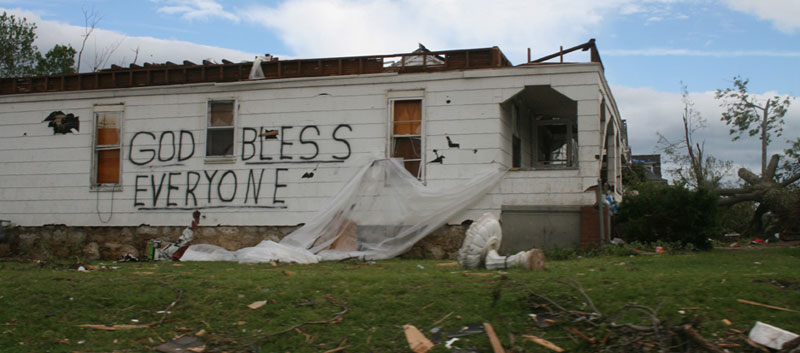

The Joplin, Missouri, Building Department is swamped with work dealing with the aftermath of the May 22 tornado that ripped through the community. More than 2,000 buildings were leveled, another 2,000 rendered uninhabitable, with a total of 7,500 structures damaged. The EF5 class twister brought winds exceeding 200 mph and carved path of devastation through the middle of the city nearly a half-mile wide and 10 miles long. It claimed the lives of 158.
Bryan Wicklund, one of Joplin's building inspectors, was out in the field an hour after the storm passed, assisting first responders. "We had numerous water and gas line leaks all over town, so I was helping shutting them down. It was search and rescue for the first 48 to 60 hours. It was kind of surreal, like you were in the middle of a movie. I saw things I never thought I would see. Living in Missouri my whole life, I've seen lots of tornadoes, but nothing like this one, the granddaddy of them all."
By the middle of the week, Steven Cope, Joplin's Building Official, contacted the Missouri Structural Assessment and Visual Evaluation Coalition (SAVE). This group of more than 1,000 volunteer engineers, architects, building inspectors and other trained professionals assists the Missouri State Emergency Management Agency with building damage inspections.
"In three days, (SAVE) had looked at all my damaged structures," Cope said. "They went from 20 some folks the first day to about 40 the second day. On the last day, we had over 70. It was an amazing effort. That's valuable information that all the emergency organizations are looking for when they get here.
"When we drove around and looked at the damage, we thought of what could we do that was not an expensive change to our local code and would have a greater impact. Our city fathers and our local home building association were very supportive of our ideas."
The building code was promptly amended by the City Council and is now in the 90-day public comment period before it goes into effect. It makes a number of changes—inexpensive upgrades—to the building code, to mitigate future storm damage. "It's not going to stop direct hits," Cope said, "but will help in peripheral areas where people lost roofs, or where walls lifted off foundations. For a couple of hundred dollars extra in building cost, we are looking at a significant improvement in preventing the type of damage we experienced."
Joplin's revamped ordinance changes the spacing of foundation anchor bolts. The interval had been 6-foot on center, and now it is required to be 4-foot on center and line up with the rebar required in cement block cells. The new ordinance also calls for additional hurricane fasteners to every rafter end and also on trusses. Where fastening had been required on every other truss, every 4 feet, the code was amended to include fastening on every member on the truss.
Cope said the response crews will keep pushing to get Joplin's buildings in safe order. "I've had a few complaints on turnaround times," he said. "We strive to keep our commercial plans down to two weeks, what we've always offered. In residential, we are trying to turnaround overnight. We didn't normally do that, but in the rebuild effort, we are trying to make it happen faster.
"It's a hard situation for people not to get frustrated in, but the level of patience really surprises me. It's one of those times when people really show their character. Our citizens, have been wonderful."